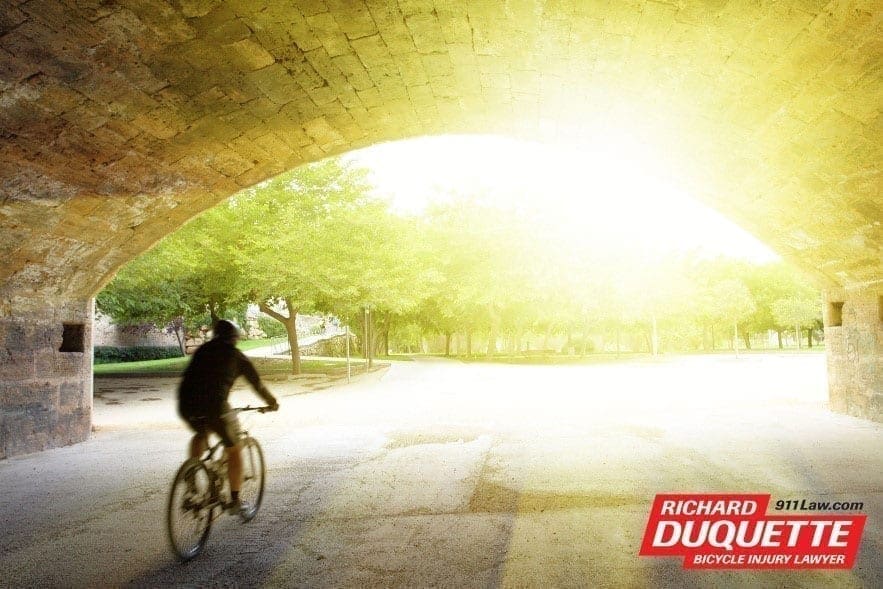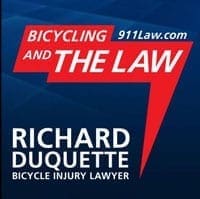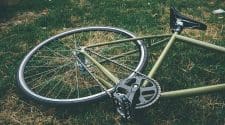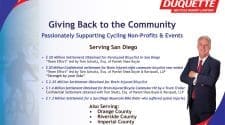By Richard Duquette, Esq, Law Firm of Richard Duquette
Listen to the Podcast
Damages in a bicycle injury case are broken up into two categories: Economic damages, and Non-Economic damages. (Note: these categories do not include Punitive Damages for road rage or drunk/drugged driving.)
Economic damages are hard losses like a life care plan, lost earnings, and medical bills, which must be paid back to you or your doctors. These are alternatively described as “out of pocket losses.” These damages are called special damages because they are easily quantified and highly specific in nature. They are proven by things like actual medical bills and verified lost earnings.
Non-Economic damages are far more extensive. They are the human losses. This includes your lost enjoyment of bicycling, pain and suffering, psychological damages, and the many other ways that an injury can detrimentally affect someone’s quality of life. CACI § 3905A lists examples that include “physical pain, mental suffering, loss of enjoyment of life, disfigurement, physical impairment, inconvenience, grief, anxiety, humiliation, and emotional distress.” This can involve a wide variety of mental, emotional, and physical deficits and can affect plaintiff’s enjoyment of an equally wide variety of their previous activities.
CACI notes further that “no fixed standard” exists to measure these losses, and charges the jury to use its judgment and common sense to put a reasonable value on these things. They are also referred to as general damages because of this lack of specificity. Non-economic damages put a dollar value on priceless (and sometimes intangible) things.
A trial lawyer knows that a jury must award damages for each category of non-economic harm, and knows how to get the maximum compensation for these harms. The bicyclist must be reasonably compensated. Like a respected trial lawyer once said, if the defendant breaks the law and drives 65 MPH in a 45 zone, you don’t say it’s unfair to issue a citation. It’s the law. The same goes for awarding non-economic damages.
The Method:
Proving non-economic damages is a highly technical form of story-telling. The goal is to paint a picture of the plaintiff’s life before the crash, and contrast it with their life after the crash. Remember that damage awards are about making the plaintiff whole—this means compensating them for their losses. Law and Economics scholars call non-economic damages “hedonic damages” (from the same root as “hedonism”) because they quite literally seek to quantify and compensate for a loss of happiness or pleasure.
It’s not about feeling sorry for the plaintiff. The law does not compensate for grief alone. It’s about proving objective, compensable losses in one’s quality of life. Thus, to plead and prove non-economic damages requires you to show the jury what the plaintiff “lost” in the accident. A good non-economic damages case is one where the plaintiff lost significant activities and experiences in their life that contributed to their overall well-being. In a very real sense, it means that the plaintiff has lost a part of themselves. The law trusts jurors with the discretion to put a dollar value on that loss.
- The “Before” Picture: First, get to know your client. What was his/her life like before the crash? How far or how often did her/she ride, train, or race per year? How did their body look and feel when they rode before the crash? Were they fit, happy, productive? Of course! Evidence of this includes family photos, records of rides and events participated in, awards, newspaper clippings, and anything else that shows an active, energetic, and happy person. This active lifestyle is what they lost.
- The “After” Picture: Now compare how your client’s life was affected the morning after a crash. They woke up in the hospital, had surgery, have plates holding bones together or are even on a ventilator or in a wheelchair. Their lives are shattered. Of course, many cases involve gradual recovery. Sometimes the plaintiff returns to near their original activity level over some time. Sometimes they have permanent deficits. In any event, their progress from their most vulnerable state to their current state (and the time it took to get there) should be painstakingly chronicled. Even in a case of full recovery, they may be compensated for the time in which they were limited by deficits. And in cases where there is permanent impairment, the current baseline should still be contrasted with the way they were before, with a clear message that they will never return to their previous condition.
- Lay witnesses will provide compelling stories to prove the pain, suffering and loss of enjoyment of bicycling, and life at different points in the bicyclist’s/plaintiff’s life. These may be teammates, riding buddies, friends and family (consortium) members. Of course, the expert medical witnesses will state what injuries drive the change in lifestyle. But, human losses are outside the scope of testimony of an expert, per the Evidence Code.
- Causation: All experienced trial lawyers know how to demonstrate loss in a settlement demand package, mediation, arbitration or a jury trial. We must bring home the losses with visuals: Pictures, a cat scan, x-rays, or a white board. These make the losses real. In other words, the subjective loss of quality of life must be causally connected to the objective injuries. The functional or emotional deficits the plaintiff lives with today are inextricably connected to the physical injuries they received yesterday. A good lawyer knows how to draw those connections even when they are not obvious at first.
- Honoring the Jurors: As trial lawyers we know to trust the jury to collectively apply their 400 plus years of experience. The jury instructions state that “no fixed standard” exists to measure non-economic losses, and yet the law in its wisdom charges the jury to use its judgment and common sense to put a reasonable value on these things.
- Start the story with joy: Explain to your trusted jury, the joy of bicycling and an athletic lifestyle. Tell them the truth, what were your real losses? Explain there were good and bad days. Own up to them, it’s OK. Remember that the plaintiff is not to be compensated for grief or misery, but for what they lost. To make a strong case for non-economic damages, you have to show that the plaintiff had a good life before the accident. Explain to the jury why riding an expensive bicycle brought you joy. Tell your trusted jurors why bicycling mattered in your life. Was it a vehicle for health, release of stress from work, a reason to travel, or to bring your family to a healthy outing? As we know, some of our unique losses are worth more than others.
- Discuss the struggle to maintain an active Bicycling lifestyle. Every person’s struggle is different. In one jury trial, my triathlete client testified about his knee injury, Synvisc lubricant injections, recovery and leading the San Diego International Triathlon’s talented field, only to stop four miles into the six-mile run from the finish line, so as to avoid re-injuring his knee. The jury gasped at this, as he connected with the jury and shared his comeback struggle.
Read Part Two – Jurors, life expectancy of the loss, Non-Economic Damages, fair monetary trade for losses.
Ride safe! Ride strong!
About the Law Firm of Richard L. Duquette
The Law Firm of Richard Duquette has recovered millions in damages for injured bicyclists since 1983. Attorney Duquette is an experienced bicyclist himself, and has dedicated his practice to helping this community. He is experienced in all types of cases involving bicycle crashes, injuries, and other legal troubles.
Mr. Duquette serves a wide variety of bicyclists. Whether you prefer road cycling, mountain biking, track riding, Randonneuring, E-Bicycles, Handcycles, Century Rides, Triathlons, Duathlons, or Criterium, Mr. Duquette knows how to best serve your legal needs regardless of the type of bicyclist you are.
Mr. Duquette is an expert at maximizing, proving, and recovering damages.
For more information please visit the Law Firm of Richard Duquette.
Credit: Gerry Spence Trial Lawyers College and Trial Lawyer colleagues throughout the USA.
CACI – California Civil Jury Instructions
©Richard L. Duquette, Esq. All rights reserved 2018 – LEGAL ADVERTISING
www.911law.com * 760-730-0500 * Podcast: Bicycling and The Law 911law.com
The information in this article is for general information purposes only. The focus of this article is on California Law. You should contact an attorney in your state for case specific advice, as details of the law and procedural requirements vary from state to state. Nothing in this article should be taken as legal advice for any individual case or situation. This information is not intended to create an attorney-client relationship; and the receipt, reading, listening, or viewing of this content shall not constitute an attorney-client relationship. Nothing in this article shall be construed as a warrant, promise, or guarantee about the outcome of your case or any other matter. This information may contain personal impressions or statements of opinion on a subject that do not apply in your case. Further, statements of law reflect the current state of the law at the time of writing and/or recording, and may not reflect subsequent changes in the law.
Image Copyright : Roman Sigaev
No products found.

















